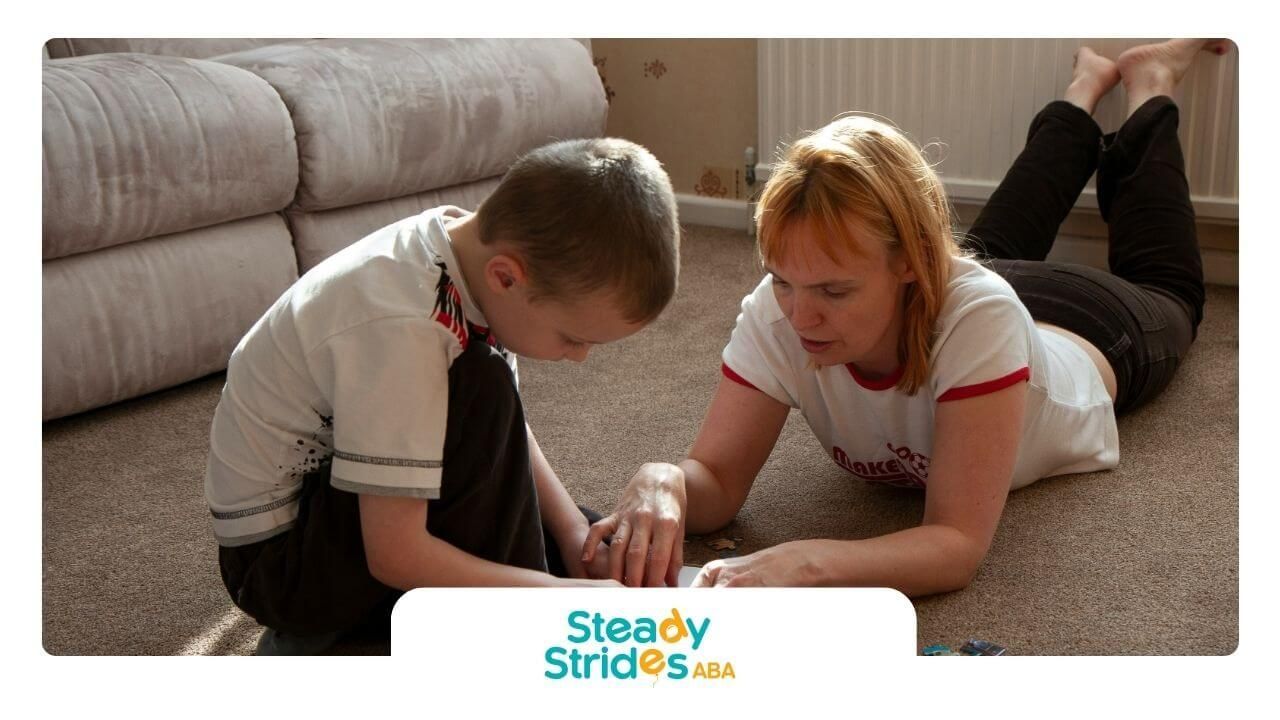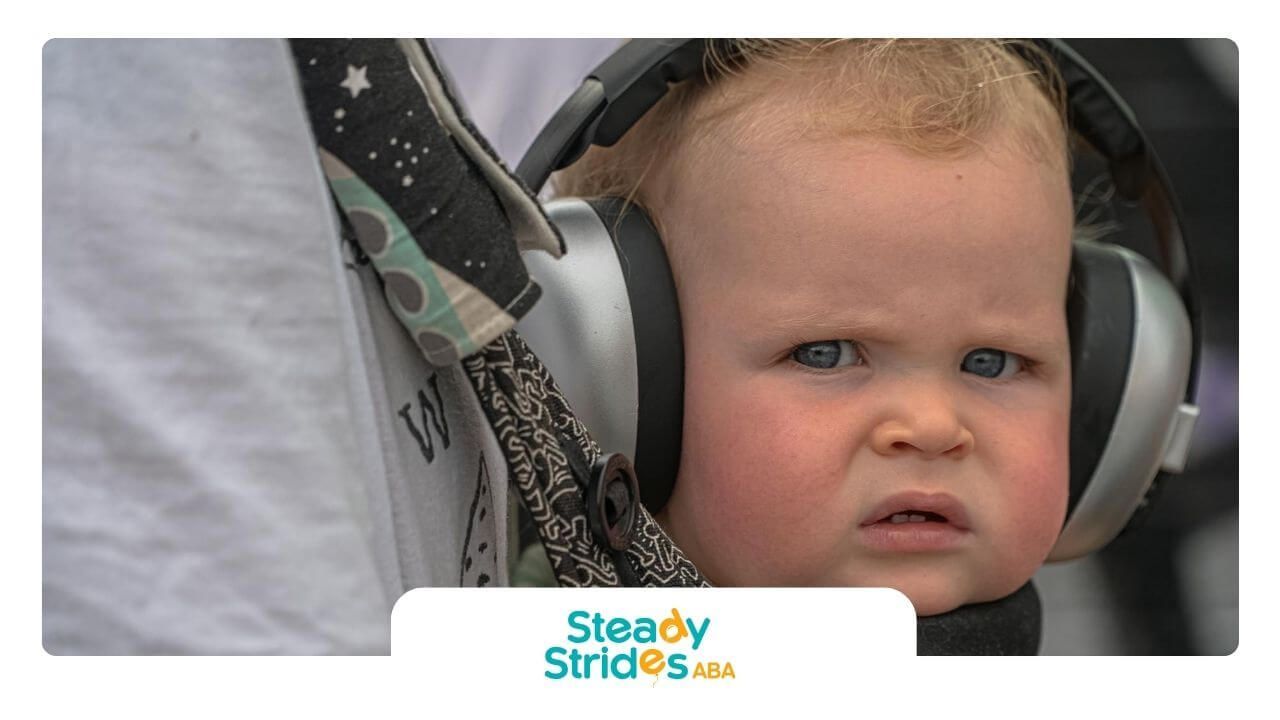Understanding Autistic Masking
Autistic masking is a significant and often misunderstood aspect of life for many individuals on the autism spectrum. The following sections explore its definition, purpose, and common traits.
Definition and Purpose
Autistic masking refers to the behaviors adopted by some autistic individuals to suppress or hide their autistic traits in order to fit in and avoid judgment. This practice often involves mimicking neurotypical behaviors to navigate social situations more easily. For some, masking becomes a means to conform to societal norms by presenting different versions of themselves in various contexts.
Common Traits of Masking
The traits of masking can vary widely but often include:
- Mimicking Social Behaviors: Copying the actions and behaviors of neurotypical peers to blend in socially.
- Suppressing Stims: Deliberately minimizing physical manifestations of autism such as hand-flapping or rocking.
- Forced Eye Contact: Making eye contact even if it feels uncomfortable, to appear engaged.
- Scripted Conversations: Using rehearsed phrases or small talk to interact with others.
- Adopting Alternative Personalities: Presenting different personas in different social situations to fit perceived expectations.
For an in-depth look at how autistic masking presents, you can visit our section on signs of autistic masking.
Understanding the complexities of masking is crucial for parents, educators, and professionals working with autistic individuals. Recognizing these behaviors and their purpose can pave the way to creating more accepting and supportive environments for autistic individuals. This can reduce the need for masking and its associated stress, ultimately contributing to better mental health outcomes, A topic covered in more detail in our article on autistic masking and burnout.
Effects of Autistic Masking
Autistic masking, the practice where individuals with Autism Spectrum Disorder (ASD) suppress their natural behaviors and mimic neurotypical behaviors, can have a significant impact on their well-being. Understanding these effects helps parents, educators, and professionals better support individuals with autism. The key effects include emotional, social, and mental health consequences.
Emotional Consequences
Masking can be emotionally exhausting for individuals with autism as it requires constant self-monitoring and effort to conform to social norms. This process can lead to:
- Emotional Exhaustion: Persistent effort in masking can deplete an individual's emotional resources, leaving them feeling drained and overwhelmed.
- Increased Anxiety: The
fear of being exposed or misunderstood often heightens anxiety levels in those who mask. They may constantly worry about making mistakes or behaving inappropriately.
- Loss of Identity: Continuous masking can cause individuals to lose touch with their authentic selves, leading to an identity crisis and feelings of disconnection from their true nature.
Social Implications
Masking affects social interactions and relationships, often leading to:
- Social Isolation: The effort to mask can make social interactions feel insincere and exhausting, often resulting in the individual retreating from social engagements.
- Difficulty Maintaining Relationships: Masking can make it hard to form genuine relationships as others interact with the masked persona, not the individual's true self. This can lead to a lack of deep, meaningful connections.
- Increased Social Anxiety: The constant fear of being unmasked or misunderstood in social settings increases social anxiety and stress.
Impact on Mental Health
The mental health impact of masking is profound, often contributing to:
- Heightened Anxiety: Masking is associated with increased levels of anxiety disorders, including generalized anxiety disorder and social anxiety.
- Depression:The emotional toll and isolation from masking often lead to depressive symptoms and, in severe cases, clinical depression.
- Exhaustion and Burnout:Continuous masking leads to significant mental and physical exhaustion, often culminating in burnout.
Understanding the effects of autistic masking is crucial for providing the necessary support and care.
Identifying Autistic Masking
Recognizing autistic masking is crucial for providing better support to autistic individuals. Understanding the signs and factors contributing to masking can help parents, educators, and professionals address these behaviors effectively.
Signs and Symptoms
Autistic masking involves concealing or altering natural behaviors to conform to societal norms. While masking can sometimes be subtle, there are several signs and symptoms that might indicate an individual is masking their autism.
Common signs of autistic masking include:
- Mimicking Social Behaviors: Copying the actions, speech patterns, or facial expressions of non-autistic peers.
- Suppressing Stims: Forcing oneself to stop self-stimulatory behaviors (stims) like hand-flapping or rocking.
- Scripted Interactions: Using prepared phrases or responses in social situations.
- Avoiding Eye Contact: Either making a conscious effort to maintain eye contact or avoiding it completely.
- Camouflaging: Blending into different social settings by observing and imitating others.
Factors Contributing to Masking
Several factors contribute to the prevalence of autistic masking. Understanding these can help in creating supportive environments that reduce the need for masking.
- Social Pressure: Autistic individuals often feel the need to mask to fit in and avoid judgment or bullying. The societal expectation to conform can be a significant driver of masking behaviors.
- Fear of Rejection: Concerns about being excluded or misunderstood lead many to hide their autistic traits.
- Professional Environments: Workplace settings can compel adults with autism to mask their behavior to meet professional standards and expectations.
- Educational Settings: Schools and educational institutions can place pressure on autistic students to mask, to avoid standing out or being singled out.
Addressing these factors by creating accepting, inclusive environments can help reduce the need for autistic masking.
By recognizing the signs and understanding the contributing factors, parents, educators, and professionals can take proactive steps to support autistic individuals and explore strategies to stop autistic masking, leading to healthier and more authentic expressions of their true selves.
Coping Strategies for Autistic Masking
To address the complexities of autistic masking, it is essential to implement effective coping strategies. In this section, we will explore seeking professional guidance, Cognitive Behavioral Therapy (CBT), and the process of unmasking and rediscovery.
Seeking Professional Guidance
Professional guidance is crucial in helping individuals who are masking their autism traits. Consulting with a psychologist, neurodevelopmental specialist, or mental health professional specializing in ASD can offer valuable support and insights. These professionals can create personalized intervention plans tailored to the individual's unique needs, helping to alleviate the pressure to mask.
Cognitive Behavioral Therapy (CBT)
Cognitive Behavioral Therapy (CBT) is an evidence-based approach that has proven effective in helping individuals with autism spectrum disorder (ASD) manage emotional and mental health challenges. CBT focuses on changing maladaptive beliefs, addressing negative thinking patterns, and developing coping strategies.
CBT can aid in reducing anxiety, managing emotional issues, coping with stress, and improving overall well-being. Meta-analyses of randomized controlled trials demonstrate that over 70% of autistic children and adults respond positively to CBT treatment. Adaptations may be necessary, such as more sessions, involving caregivers, and incorporating visual aids.
Unmasking and Rediscovery
Unmasking involves the process of gradually reducing the tendency to hide autism traits and embracing one's true self. This can be a transformative experience for individuals with ASD, leading to improved mental health and self-acceptance.
Key steps to support unmasking include:
- Encouraging self-awareness and self-compassion.
- Creating safe and accepting environments where individuals feel comfortable expressing their true selves.
- Engaging in activities that promote self-discovery and personal interests.
By fostering an environment that reduces the need for masking, parents, educators, and professionals can help individuals with ASD navigate their journey towards authenticity.
Implementing these coping strategies and creating supportive environments are essential steps towards addressing the complexities of autistic masking.
Supportive Environments for Autistic Individuals
Creating an environment where autistic individuals feel safe and supported is critical to reducing the need for autistic masking. This section explores how to make spaces more accepting and reduce the necessity for masking.
Creating Accepting Spaces
An accepting space fosters inclusivity and psychological safety, enabling autistic individuals to be their authentic selves without the pressure to conform. This can alleviate the emotional and mental burden caused by masking autism and reduce its detrimental effects.
Key attributes of accepting spaces include:
- Inclusive Communication:Encourage open and honest communication. Use language that is respectful and understanding of neurodiversity.
- Sensory-Friendly Environment:Minimizing sensory overload by controlling noise levels, lighting, and odors. This helps reduce stress and anxiety.
- Supportive Social Interactions:Promote respectful and understanding social interactions. Teach peers about autism to foster empathy and support.
- Safe Zones:Create designated areas where autistic individuals can retreat when they feel overwhelmed. This encourages self-regulation and reduces stress.
Implementing these practices can significantly reduce the compulsion to mask.
Reducing the Need for Masking
Efforts to reduce the need for masking should focus on both systemic changes and individual support. This can be achieved by addressing the root causes that trigger masking behaviors.
Strategies to reduce masking:
- Educate and Advocate:Increase awareness about autism within the community. Educators and parents can advocate for neurodiversity in schools and workplaces.
- Encourage Authenticity:Empower autistic individuals to express their true selves, recognizing their unique strengths and needs.
- Set Boundaries:Help individuals learn to set boundaries and communicate their comfort levels. This includes understanding and expressing personal preferences.
- Professional Support:Engage with therapists and counselors who understand autism. Cognitive Behavioral Therapy (CBT) can be a helpful tool for some individuals.
Reducing the need for masking by creating accepting spaces and encouraging authenticity can have profound benefits. For more in-depth understanding, check out strategies on autistic masking in adults for additional insights.
Addressing Mental Health Challenges
Effective strategies for addressing mental health challenges in individuals with autism spectrum disorder (ASD) are crucial for reducing practices like autistic masking. This section will explore medication considerations, therapy and behavioral interventions, and a collaborative care approach.
Medication Considerations
Medications can play a role in managing certain behaviors associated with ASD, although they are not a cure for autism itself. The National Institute of Child Health and Human Development (NICHD) points out that medications can target specific behaviors such as aggression or self-injury, offering support alongside other treatments like behavioral therapies. This combination can be particularly effective, enabling individuals to focus better on learning and communication activities.
The U.S. Food and Drug Administration (FDA) has approved certain antipsychotic drugs, including risperidone and aripiprazole, for treating irritability in children with ASD. It's essential for parents to consult with healthcare providers to discuss the risks and benefits before starting any medication regimen for their child.
| Medication | Approved Use | Age Group |
|---|---|---|
| Risperidone | Treating irritability | Children 5-16 years |
| Aripiprazole | Treating irritability | Children 6-17 years |
Careful monitoring and collaboration with healthcare providers ensure safe and beneficial use of medications, recognizing that all medications come with risk. Medications are typically started on a trial basis to gauge their effectiveness, and adjustments may be necessary to find the most effective plan for the individual.
Therapy and Behavioral Interventions
Therapy and behavioral interventions are cornerstones in addressing autistic masking. Cognitive Behavioral Therapy (CBT) helps individuals with ASD develop coping mechanisms and social skills, reducing the need for masking.
Applied Behavior Analysis (ABA) is another effective method that focuses on improving specific behaviors such as communication, social skills, and learning skills. For many, ABA helps reduce the stress caused by the need to mask their autism in social situations.
Collaborative Care Approach
A collaborative care approach involves a team of professionals including psychologists, psychiatrists, occupational therapists, and educators working together to create a comprehensive treatment plan. This team-based approach ensures that all aspects of the individual's health are addressed, leading to more effective management of ASD-related challenges.
Collaboration extends to the family and caregivers, who play an essential role in the treatment plan. Frequent communication and regular updates between all parties are crucial for the success of this approach. By working closely together, the risks are minimized, and the interventions can be tailored to the individual's unique needs.
SOURCES:
https://www.henryford.com/blog/2023/04/autism-masking
https://www.autism.org.uk/advice-and-guidance/topics/behaviour/masking
https://www.healthline.com/health/autism/autism-masking
https://nurselinecs.co.uk/autism/what-are-the-effects-of-autism-masking/
https://www.nichd.nih.gov/health/topics/autism/conditioninfo/treatments/medication-treatment













